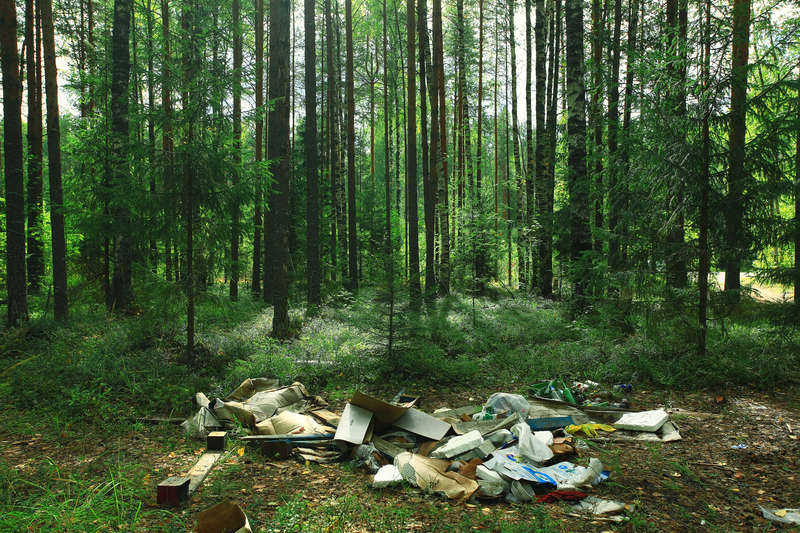Pathways to a Greener Future by Reducing Plastic
Plastic pollution is one of the most critical environmental challenges of our era. With an estimated 8 million tons of plastic entering our oceans each year, the need for immediate and sustainable solutions has never been more pressing. This comprehensive article will explore diverse pathways to a greener future by reducing plastic, providing detailed strategies, global insights, and actionable tips for individuals, communities, and industries.
Understanding the Scale of Plastic Pollution
Plastic products are everywhere--from packaging and bottles to consumer electronics and clothing fibers. Their widespread use is tied to their convenience and cost-effectiveness, but this has led to environmental havoc. A plastic-dependent society generates waste that clogs landfills, pollutes water bodies, threatens wildlife, and even enters our food chain as microplastics.
- Nearly 50% of plastic is single-use and discarded within minutes of use.
- Plastic can take up to 1000 years to decompose, breaking down into microplastics.
- More than 700 marine species are affected by plastic debris.
- Microplastics have been found in 83% of tap water tested worldwide.
Clearly, reducing our plastic footprint is essential to safeguarding the planet for future generations.

Key Drivers for Reducing Plastic
Environmental Protection
Plastic pollution disrupts entire ecosystems. Animals ingest or become entangled in plastic, leading to injury or death, and chemical additives in plastics can leach into soils and waterways, impacting both flora and fauna.
Human Health Risks
Microplastics are now found in drinking water, seafood, and even the air we breathe. Certain plastic additives have been linked to hormonal imbalances, cancer, and other health concerns.
Economic Impact
Cleaning up plastic waste costs governments billions each year. Moreover, contaminated land and water resources can adversely affect tourism, fisheries, and agriculture.
Pathways to a Greener, Plastic-Free Future
There are multiple pathways to a greener future by reducing plastic. These approaches operate at various scales--from individual actions and community programs to legislative reforms and innovations in industry.
1. Individual Actions and Lifestyle Changes
- Switch to Reusable Alternatives: Carry reusable shopping bags, water bottles, coffee cups, and straws. This simple shift can eliminate thousands of single-use items over a lifetime.
- Avoid Products with Excessive Packaging: Opt for loose fruits, vegetables, and bulk foods to cut down on unnecessary plastics.
- Participate in Plastic-Free Challenges: Join movements like "Plastic Free July" to raise awareness and jumpstart habit change.
- Proper Sorting and Recycling: Learn local recycling rules and clean recyclables before disposal to avoid contamination.
- DIY Household Products: Make your own cleaning agents or personal care items using natural ingredients and pack them in reusable containers.
*Every small step counts. By integrating plastic reduction methods in daily life, individuals contribute to collective change.*
2. Community and Grassroots Efforts
- Community Clean-Ups: Organize or participate in local beach, river, or neighborhood clean-ups. These events not only remove existing plastic but also spread awareness.
- Plastic-Free Campaigns: Mobilize your community to petition for bans on certain single-use plastics or to promote zero-waste stores and refill stations.
- Education: Conduct workshops at schools and community centers to educate the public about plastic pollution and sustainable alternatives.
- Support Local Businesses: Patronize businesses that use compostable, glass, or metal alternatives and reward those moving toward a plastic-free model.
3. Business and Industry Innovation
The corporate sector plays a pivotal role in reducing plastic for a sustainable future. Businesses can innovate in the following ways:
- Biodegradable and Compostable Alternatives: Develop and use packaging made from plant-based materials like cornstarch, potato starch, or bagasse.
- Product Redesign: Adopt minimalist packaging strategies or create refillable product systems to minimize waste.
- Reverse Logistics: Implement take-back and recycling schemes where consumers return packaging for reuse.
- Corporate Responsibility: Sign global commitments to reduce virgin plastic and transition to recycled content.
- Research & Development: Invest in alternatives such as edible packaging, beeswax wraps, or biodegradable plastics that safely decompose.
4. Policy, Legislation, and Governance
- Bans on Single-Use Plastics: Many governments now prohibit certain items like plastic bags, straws, and polystyrene containers.
- Extended Producer Responsibility (EPR): Laws incentivize manufacturers to design products that are easier to reuse and recycle.
- Deposit Return Schemes: Encourage recycling by refunding a small deposit to consumers who return bottles and cans.
- Public Procurement Policies: Governments can drive demand for plastic alternatives by setting eco-friendly requirements for procurement contracts.
- Global Treaties: International cooperation, such as the UN's push for a legally binding treaty to end plastic pollution, can synchronize efforts globally.
Sound policy frameworks are essential for long-lasting change.
Innovations Shaping Plastic Reduction
Emerging Materials
- Polylactic Acid (PLA): Bioplastic derived from fermented plant starch, compostable under industrial conditions.
- PHA and PHB: Biodegradable plastics produced by bacteria, ideal for packaging or agricultural use.
- Edible Packaging: Made from seaweed, rice, or potatoes, these materials eliminate waste entirely.
- Zero-Waste Design: Products created with end-of-life recyclability or compostability in mind, following cradle-to-cradle principles.
Technology for the Circular Economy
Advanced technologies are accelerating progress on the road to plastic reduction for a greener future:
- Chemical Recycling: Breaks plastics down into basic monomers for reuse in new products, reducing reliance on fossil fuels.
- AI-Enabled Waste Sorting: Artificial intelligence sorts plastics more efficiently, improving recycling rates.
- Blockchain for Traceability: Tracks plastic through the supply chain for greater accountability and improved recycling outcomes.
Circular Economy and Closed-Loop Systems
- Refill Models: Reusable containers for everything from soap to soft drinks are gaining popularity.
- Product-As-A-Service: Companies retain ownership of goods and simply lease them, encouraging durability and return for recycling.
*These innovations move beyond recycling and address the root of the plastic problem: overproduction and single-use culture.*
Success Stories in Reducing Plastic Use
- Rwanda: The East African nation pioneered a ban on plastic bags in 2008, inspiring global movements. Kigali, the capital, is now one of Africa's cleanest cities.
- European Union: The EU has implemented directives banning select single-use plastics, leading to drastic reductions in waste found in coastal environments.
- Iceland Foods: This supermarket chain has pledged to eliminate plastic packaging for all its own-brand products, switching to paper and compostables.
- Loop: An innovative platform where consumers buy products in durable containers and return them for cleaning and refilling, closing the packaging loop.
These examples prove that transformative change is possible on national, corporate, and community levels.
Tackling Myths About Plastic Reduction
- Myth: Biodegradable plastics are always better.
Fact: Some biodegradable plastics only decompose under specific conditions and can contaminate recycling streams. - Myth: Recycling alone can solve the plastic crisis.
Fact: Globally, only about 9% of plastic is recycled; reducing production and consumption is equally critical. - Myth: Plastic bans restrict consumer choice.
Fact: More alternatives are available than ever before, with many offering superior performance and eco-friendliness.
Overcoming Challenges in Reducing Plastics
Despite enthusiasm around pathways to a greener future by reducing plastic, several barriers exist:
- Cost: Alternatives to plastic are often more expensive in the short term, although prices are falling as demand grows.
- Awareness Gaps: Many consumers remain unaware of the impact of plastic pollution or the available alternatives.
- Systemic Inertia: Current infrastructure, from recycling centers to waste collection, is built around plastics.
- Consumer Convenience: Habits are slow to change, especially for items considered essential or hygiene-related.
*Addressing these challenges requires education, investment, and strong policy measures.*
What You Can Do Today for a Plastic-Free Tomorrow
- Educate Yourself and Spread the Word: Share information with friends, family, and colleagues. Knowledge is the first step to change.
- Support Legislation: Voice your support for plastic reduction bills or waste management improvements in your area.
- Choose Brands That Prioritize Sustainability: Vote with your wallet to encourage wider industry change.
- Get Involved: Volunteer for or donate to organizations dedicated to cleaning up plastic and innovating alternatives.
The Future is Green: Toward a Plastic-Free Planet
The transition to a plastic-free world is challenging, but the opportunities are enormous. By combining individual responsibility, community action, policy innovation, and industrial transformation, we can pave countless pathways to a greener future by reducing plastic.
As global awareness grows, innovation flourishes, and collective efforts intensify, a cleaner, healthier Earth is within our grasp. Let's choose to reduce, reuse, rethink, and refuse unnecessary plastics, shaping a sustainable environment for future generations. Together, our actions today will determine the legacy of tomorrow's planet.

Frequently Asked Questions (FAQs)
- Q: What are the easiest ways to start reducing plastic at home?
A: Replace single-use items like bags and bottles with reusables, avoid products with plastic packaging, and buy in bulk wherever possible. - Q: Are biodegradable plastics safe for the environment?
A: Biodegradable plastics are only beneficial when disposed of correctly; some require industrial composting and may not break down in landfill or nature. - Q: How can plastic reduction benefit the economy?
A: Reducing plastic cuts cleanup costs, boosts eco-tourism, and supports growth industries based on sustainability. - Q: Can technology help eliminate plastic waste?
A: Yes, from AI waste sorting to bio-engineered materials, technology is a powerful tool for innovating alternatives and improving recycling.
Conclusion: Choosing the Green Path Forward
The journey toward a greener future by reducing plastic requires commitment--from individuals, communities, businesses, and policymakers. Through awareness, innovation, and action, it's possible to turn the tide on plastic pollution and foster a cleaner, safer environment for all.
Every choice matters--start today with one plastic-free step and help build a sustainable tomorrow.